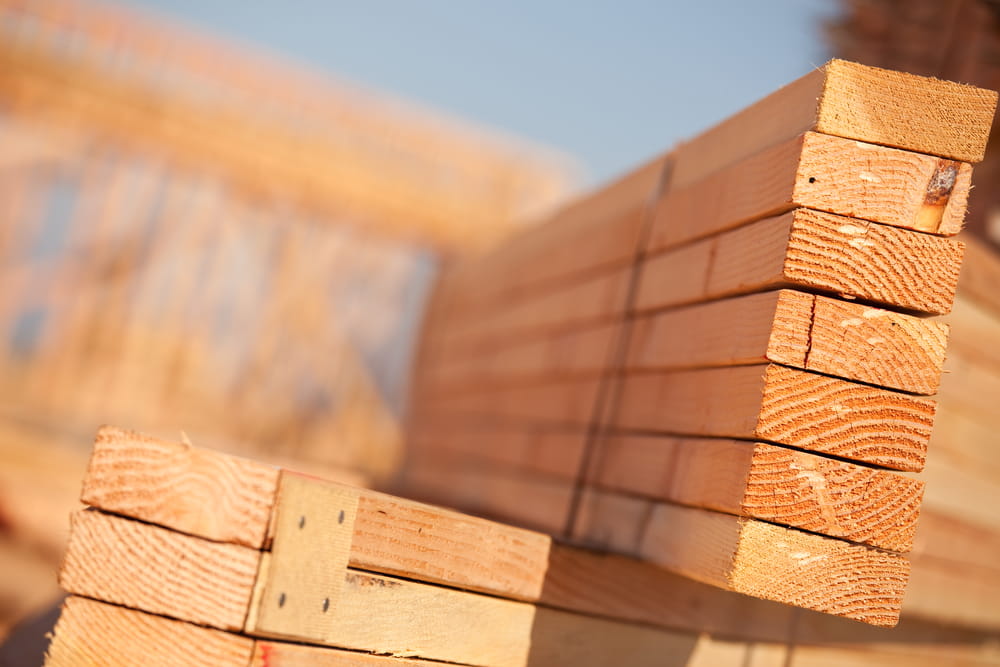COVID-19 has certainly thrown the worldwide market for a loop – everything from end-user consumer goods to raw materials has been affected significantly. It’s no surprise that during these times of economic instability, the costs for construction materials like lumber have risen as the demand for lumber increases in tandem.
However, futures contracts for lumber have gone down in price. This apparently illogical process can be confusing for many – how can futures contracts and material prices for lumber change in opposite directions? This page will break down why lumber prices have increased recently, plus go over how and why you should analyze the market to ensure you don’t waste money on lumber in the short term.
How Does the Economy Affect Construction Costs?
All economies are built in layers. When one section of the economy is affected, the others are eventually shifted in a sort of domino effect. For example, the housing sector was recently upended because of the pandemic and the resulting struggling economy – many people were evicted from their homes. Still, many more saw the opportunity to buy houses due to the lower mortgage rates.
In response, the housing market got to work constructing new homes ASAP. What’s one of the most important raw materials for the housing sector? Lumber. Therefore, it’s no surprise to see lumber prices affected by the fluctuating economy.
[ Thinking about investing in real estate? Register to attend a FREE online real estate class and learn how to get started investing in real estate. ]

Why Have Lumber Prices Been High in 2021?
Most wood is sold to builders by retailers and wholesalers in the lumber industry, who try to maximize their profit margins by buying low and selling high. Due to the increased costs of carrying inventory or shipping lumber to their clients, lumber retailers usually don’t profit if they sell their wood to builders at market-rate prices.
Instead, they try to sell their lumber at the highest prices possible. Because all other retailers are doing the same thing, this creates an artificial bump in price and demand, causing prices to increase even though the cost of other things may be decreasing. In essence, it’s because lumber and wood prices are practically always based on quotes that are above, not at, the market rate. As the market demands more lumber, the price for that lumber is expected to increase as retailers and wholesalers chase greater profit margins. Let’s take a look at some specific reasons why lumber prices are higher than average in 2021.
More Housing Demand
The COVID-19 pandemic was bad for some, but especially bad for mortgage rates… for lenders, that is. For homebuyers, it’s excellent – mortgage rates have been going down, making it a great time to buy a house, particularly if you are a first-time homebuyer. Since more people are looking to buy houses, the lumber industry has needed more wood to facilitate construction. This, in turn, has led to a spike in lumber costs from retailers and wholesalers.
Less Labor to Produce Lumber
Lumber prices have also continued to increase because fewer blue-collar laborers are available to do the hard work of lumber harvesting and construction. This is partially because many people were evicted or were unable to make the rent payments during the pandemic, but it’s also because many people left blue-collar jobs during the pandemic to pursue additional training and bolster their careers. With fewer workers available to produce lumber, lumber companies have been increasing their prices to cover the cost of holding lumber or paying higher wages to the remaining workers.
Limited Ability to Build New Lumber Mills
Last but not least, the limited labor availability has also caused lumber companies to produce fewer lumber mills over time. As a result, less lumber has been produced in aggregate than normal, creating higher demand for the limited lumber supply. Since it will be some time before new lumber mills can be created to harvest more lumber, prices are expected to increase until the supply balances with demand.
The Future of Lumber Prices
Although lumber prices have been increasing relatively consistently, they are starting to trend downward. This is reflected in raw prices for lumber (for example, August 28 saw the start of the 13th consecutive week for framing lumber prices’ decrease) and in lumber futures contracts, which have decreased in price by over 50% since their peak in May 2021.
However, although lumber prices are lower than we might expect, it’ll still take some time for the market to regulate itself and even out. For now, construction companies must either foot the bill for higher wood costs or wait until prices decrease to more acceptable levels.
What Analyzing Lumber Prices Can Teach
This is all well and interesting, but what does it teach anyone who’s not in the lumber industry? In short, lumber prices broadly reflect the economic circumstances that led to their increase or decrease. Therefore, real estate investors can look at lumber prices or property construction efforts and use the price of lumber as a proxy for the health or direction of the greater real estate market.
For instance, it may be wiser for a real estate investor to wait before starting a new construction project until wood prices go down so they can see a heftier profit. Both builders and investors can benefit from understanding how and why lumber prices change.
Summary
All in all, lumber prices have a direct and unignorable connection with the economy’s health and the housing market. As a result, serious real estate investors need to know how to analyze lumber prices and what they mean as they build their portfolios and determine whether certain investments are good decisions at the time.
Ready to start taking advantage of the current opportunities in the real estate market?
Click the banner below to take a 90-minute online training class and get started learning how to invest in today’s real estate market!


